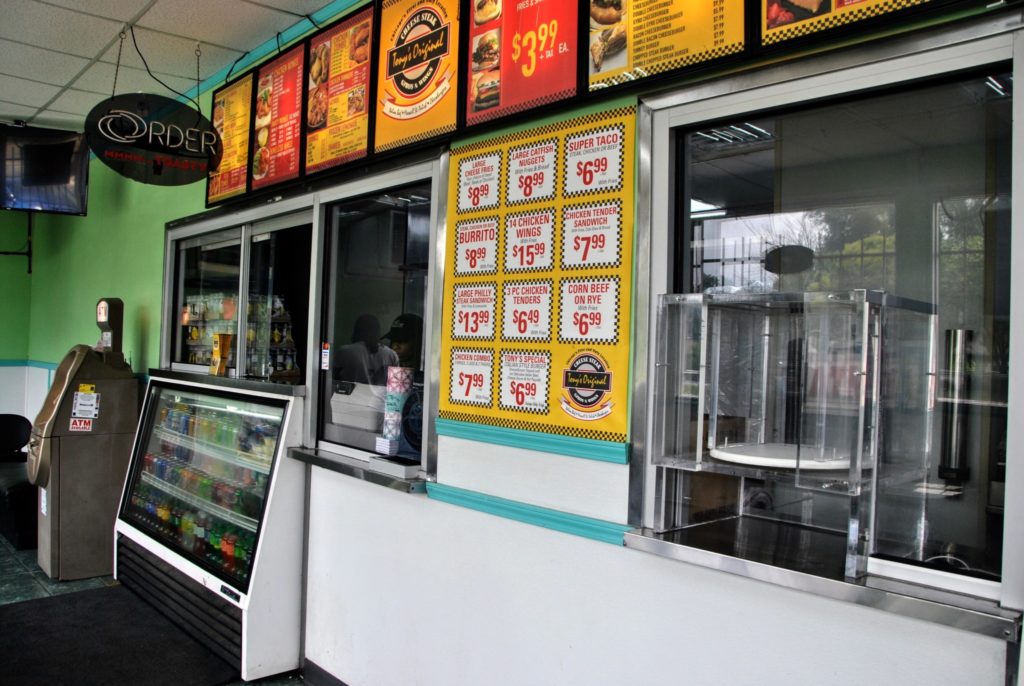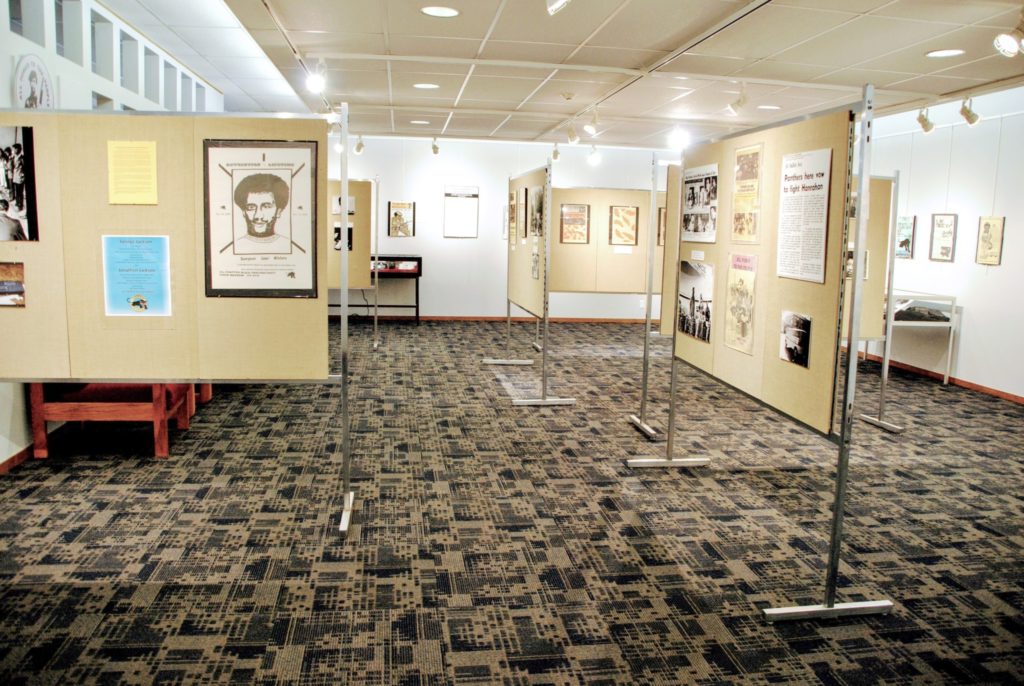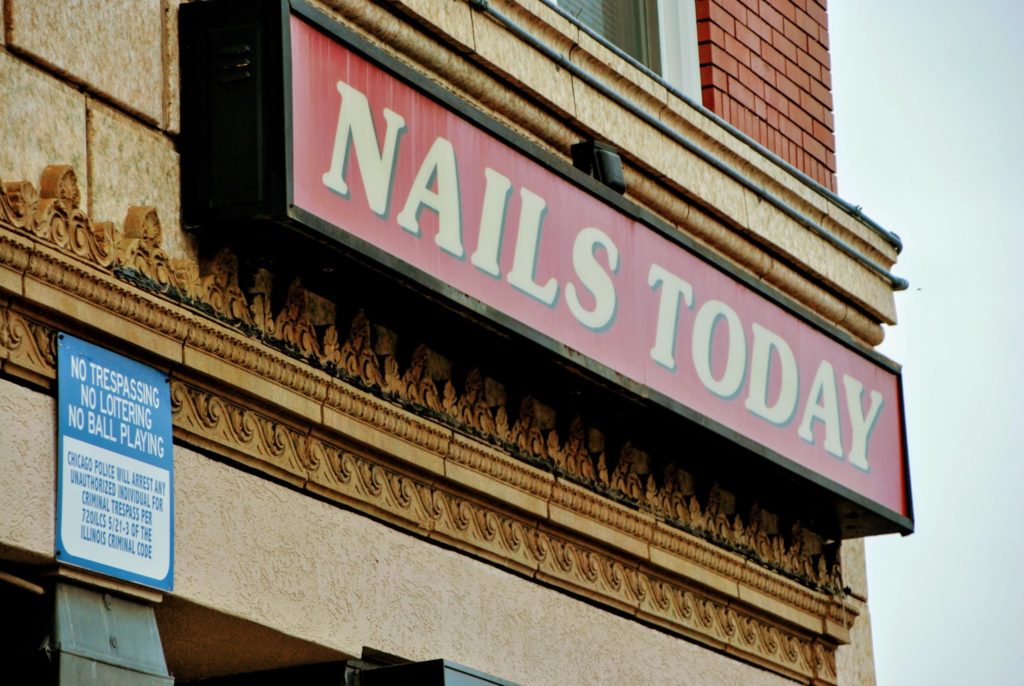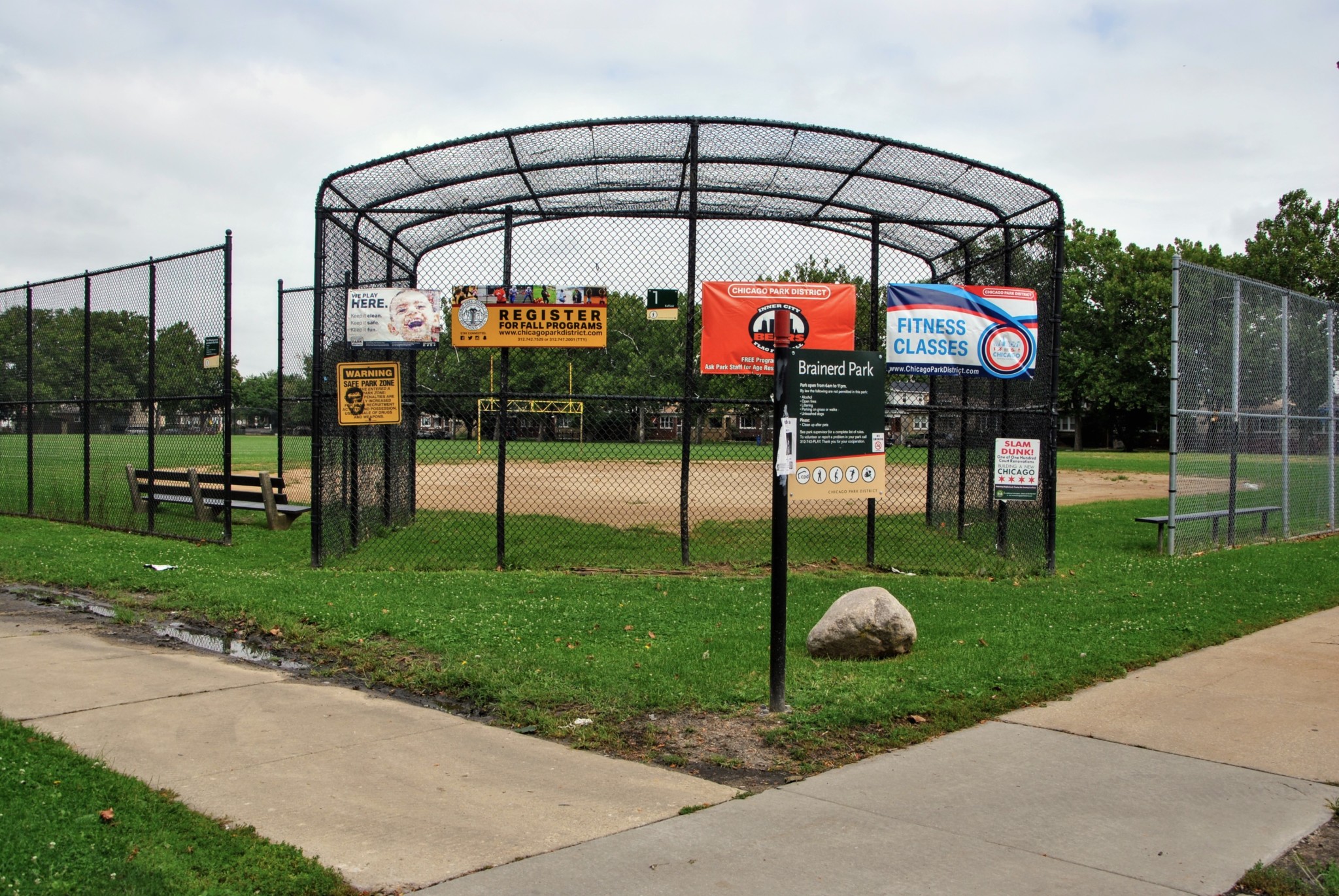- Best Fast Food Joint: Tony’s Original Philly Steaks & Wings
- Best Centrally Located Park: Oakdale Park
- Best Research Collection: Vivian G. Harsh Research Collection
- Best Active Intersection: 95th & Dan Ryan
- Best Nail Salon: Nails Today
The neighbors were always the Best of the South Side in the Auburn Gresham, Brainerd, and Washington Heights communities where I grew up. Back in the ‘70s and ‘80s, almost every community had block clubs and block club parties. My grandparents used to be the presidents of the block club in my neighborhood. I remember neighbors attending meetings, and planning the block club parties. These events helped stabilize our communities and made us all family. As president of the 96th & Racine block club in the 21st Ward, my grandmother would advocate for our streets and parks to be maintained and cleaned. Every year, one of our neighborhood customs was giving gifts to the garbage men on National Garbage Man Day. My grandparents would always provide cold beverages for them on their route.
Over the years some things have changed. The fluctuation of neighbors moving in and out—due to crime, violence, lack of resources and high taxes—has had a tremendous impact on the strong block club committees, once the pillars of the neighborhood. But there is hope, with people like myself and others that choose to work in and see these communities and their block clubs become the vibrant centers of the neighborhood again.
This past August, for the first time in over twenty-five years, I attended the block club party in my old neighborhood. Some of the neighbors from when I was a child are still living there. I was overfilled with joy to see my daughters jump rope and play in the streets as I once did. I began to talk to some of the new neighbors, and I listened. They want the same things that the previous generation of residents wanted for us: education, opportunity, family, and fun.
I don’t know what’s in the future for our communities, but my neighbors and I are full of hope. If we’re willing to put in the work, we can rebuild strong block club committees that can become once again pillars of the community.
Dr. Marlo Barnett believes in serving her community and giving back to the education field. Currently, Dr. Barnett is a teacher with Chicago Public Schools. She also sits on the Northern Illinois Alumni Association’s board of directors. An advocate for equity and diversity in computer science, Dr. Barnett is Vice President of the non-profit Computer Science for Illinois and serves as Vice President for the Chicago chapter of the Computer Science Teachers Association (CSTA).
Best Fast Food Joint
Tony’s Original Philly Steaks & Wings

Whether you’re a student at the Loomis-Longwood campus of Chicago International Charter School across the street or transferring buses nearby at 95th and Ashland, Tony’s Original Philly Steaks offers a variety of quick bites that’ll hold you over during your journey and after you arrive at your destination. Upon entry to the bright yellow food shack, you’ll find a mostly empty floor to the left, with five tables around the perimeter—one of which usually has someone with a mini DVD player, selling copies of the latest movies in theaters. The TV will typically play the news, as it does at most joints like it in the city.
The farther end of the building houses the kitchen area where customers walk up to the register and give their orders. My go-to is a Chicken Philly Dinner: a sandwich with buttered french bread, chicken, provolone cheese, onions, peppers, and more, with a side of hard-fried fries. The buttered bread is my favorite and sets the sandwich apart. Popular orders amongst my high school neighbors were catfish dinners and large trays of fried chicken for medium-sized events with lots of people or for a household that needed to settle dinner for the coming nights in advance.
While other businesses nearby have come and gone, Tony’s has proved a delicious staple in Brainerd, with no long waits and reliable taste. (Janaya Greene)
Tony’s Original Philly Steaks & Wings, 1400 W. 95th St. Monday, 10am–10pm; Tuesday–Thursday, 10:30am–10pm; Friday–Saturday, 10:30am–10:45pm; closed Sunday. Under $10. (773) 233-6200.
Best Centrally Located Park
Oakdale Park

Growing up playing in Oakdale Park made me the Chicagoan I am today. I spent countless summers swimming in the community pool and begging my mom to let me stay extra late at camp so I could get in again. The huge green grass space served as home to all of our relay races and touch football matches. Across from Oakdale stood a building filled with all of your favorite snacks. You could step right off the basketball court into the doors of what I believe was the greatest candy store in Chicago. I always got a bag of Hot Krunchy Kurls with cheese, a Lemonade Pure Delight, a Cosmic Brownie, and a mixed bag of Frooties. To this day, I can’t think of a better snack combination. (The building is now, unfortunately, a car wash.)
Beyond the scenery Oakdale has to offer, this park remains the first place where I was able to call friends family. All of my “play cousins” became so from friendships I was able to begin building in this park. Although small, the Oakdale Fieldhouse is where I first learned how to play Uno with special rules and participate in Connect 4 tournaments. So much of what I consider to be community comes from my experiences in Oakdale Park. I’m grateful to have grown up here in the park with the cousins I made and the family environment it offered me. (Kilo Smith)
Oakdale Park, 965 W. 95th St. Park hours: 6am–11pm, daily. Fieldhouse hours: 10:30am–7pm, Monday–Friday; closed weekends. (312) 747-6569. chicagoparkdistrict.com/parks-facilities/oakdale-park
Best Research Collection
Vivian G. Harsh Research Collection

It’s hard to miss the sculpture at the heart of the Vivian G. Harsh Research Collection Reading Room in Woodson Regional Library. A brass and bronze behemoth, it consists of two pieces: one sits in the center of the atrium, and the other hangs from the rafters directly above, a twisting, flowing slab of metal with an undulating ladder. The artwork is called “Jacob’s Ladder,” by artist Richard Hunt, and depicts the biblical stairway to heaven with the two halves reaching toward each other across a still unbridged stretch of open air.
Bridging that gap is the aim of the Vivian G. Harsh Research Collection, the largest collection of Black history and literature in the Midwest, which houses nearly 4,000 linear feet of archival and manuscript collections, 70,000 books, thousands of reels of microfilm, and 500 periodical titles. Teachers across the Midwest come to learn how to incorporate primary sources into their classes, and researchers from all over the country come to use the archives, which include original manuscripts and papers from the likes of Richard Wright and Timuel Black.
The collection is named after Vivian Gordon Harsh, the first Black librarian in Chicago, who started the collection in the 1920s while facing pushback from Chicago Public Library (CPL) administrators. In 1932, when Harsh was named head librarian at the newly opened Hall branch library in Bronzeville, her collection became the “Special Negro Collection” there. Eventually the expanding archive was moved to the new Woodson Regional library in 1975.
The collection has a spacious and comfortable reading room, where patrons go for a quiet place to do work or to look through materials not available for check out at other branch locations, such as the only two copies of Margaret Burroughs’s autobiography in the CPL system. The collection also contains an exhibition space, currently used to display an exhibit on the Black Panthers and their depiction in the media that uses many visual artifacts. The rotating exhibits provide an opportunity to showcase items from the collection that give a taste of what the full archives have to offer.
The collection currently has only two archivists, which can prove to be challenging when it comes to keeping up with all the unprocessed items still needing to be indexed. But the challenge is a welcome one for the librarians who work there. “It’s almost like being a detective, because you don’t know what you’re going to find,” said a Harsh archivist, adding that the history in the archives taught people that “you don’t need to be well known to be a community activist. We all have a part to play.” (Tammy Xu)
Vivian G. Harsh Research Collection at the Carter G. Woodson Regional Library, 9525 S. Halsted St. Monday–Thursday, 10am–8pm; Saturday, 10am–4pm; closed Friday and Sunday. (312) 745-2080. chipublib.org/vivian-g-harsh-research-collection
Best Active Intersection
95th & Dan Ryan
The first Red Line station I remember had an east and west terminal. After arriving to the terminal on my way home from school, my favorite thing to get from the candy store on the main floor was chocolate-covered honey buns and hot O-Ke-Doke popcorn with a watermelon-flavored Arizona iced tea. I would wait for my bus on the eastern terminal, where the buses headed west from 95th Street. The intersection smelled of Polish sausages from Jim’s. After school, students with friends or family would go to McDonald’s for a quick bite on the west side, or to Cosmo’s Beauty Mart for beauty supply items. Now the building is a Family Dollar.
Midway through high school, repair on the train tracks halted the station’s use and passengers had to take an express bus to the Garfield station to travel between 55th and 95th street—at no charge, the shuttle wasn’t necessarily unwelcome. Over time, the Mobil gas station on the eastern side closed, as did the Jim’s fast-food joint, though another Chicago-style Maxwell Street stands in the shadows of the McDonald’s.
Most recently, the station has seen a full transformation, with a DJ booth, visual art displays, and north and south terminals with a pedestrian bridge connecting the two. Throughout the process, the constant changing of bus locations was chaos; as goes the station, goes the surrounding intersection. Passengers have even expressed feeling like CTA administrators haven’t done enough to ask them what they wanted for the station, proving yet again that the only constant on the CTA is change. (Janaya Greene)
CTA 95th/Dan Ryan Red Line Station, 14 W. 95th St. Open 24/7. transitchicago.com/station/95th
Best Nail Salon
Nails Today

Expect a wait if you’re trying to get your nails done at Nails Today on 95th & Ashland, but don’t expect a disappointing paint job. Located off of a bus-accessible corner and with prices much more reasonable than other salons on the South Side, the wait can be expected. There’s no need for a list to track the order of customers, one that’s actually to be used, of course. Whichever manicurist is closest to the door remembers the orders of customers with ease. Surprisingly, quality does not lack at this salon either. Customers will always have their favorite manicurist—preference doesn’t always mean picky—yet and still customers typically walk away with a smile at Nails Today. Whether you’re getting a pedicure, acrylic set, or getting your eyebrows threaded, a self-care day at Nails Today is worth the wait. (Janaya Greene)
Nails Today, 1546 W. 95th St. Monday–Saturday, 10am–8pm; Sunday, noon–4:30pm. (773) 238-6822.


